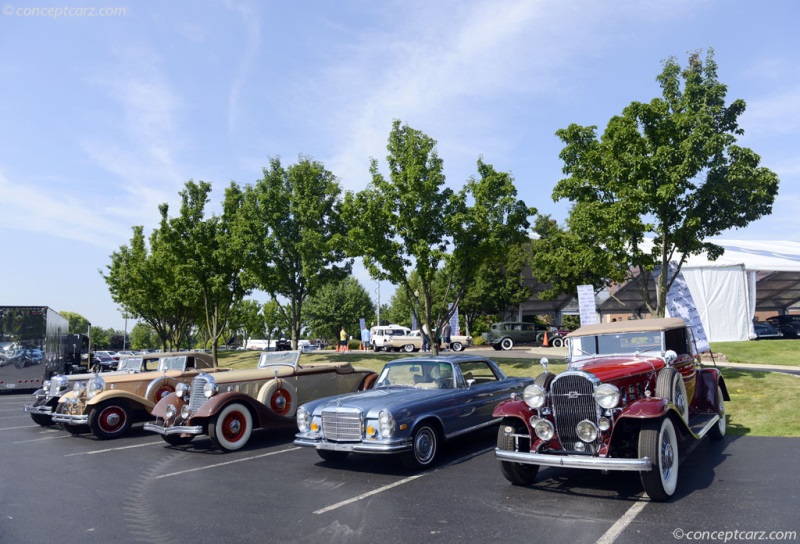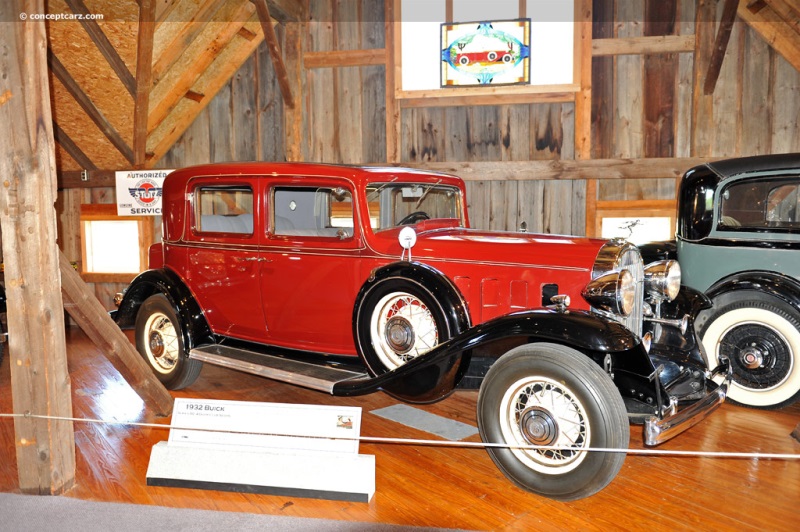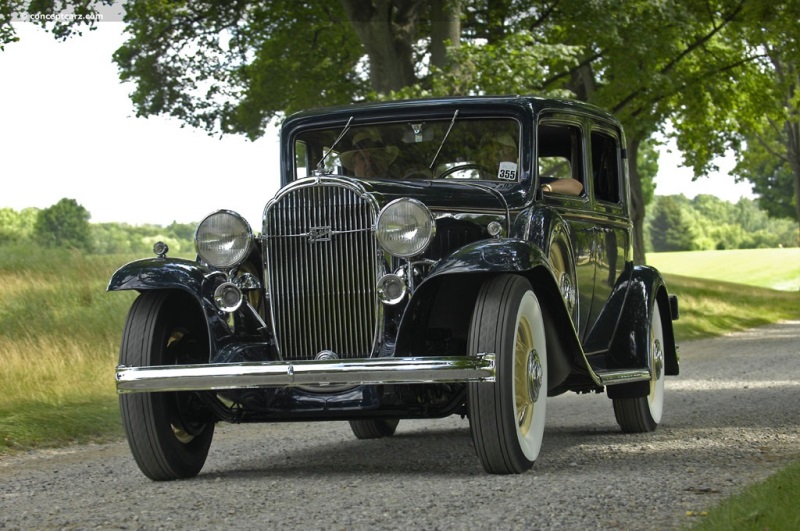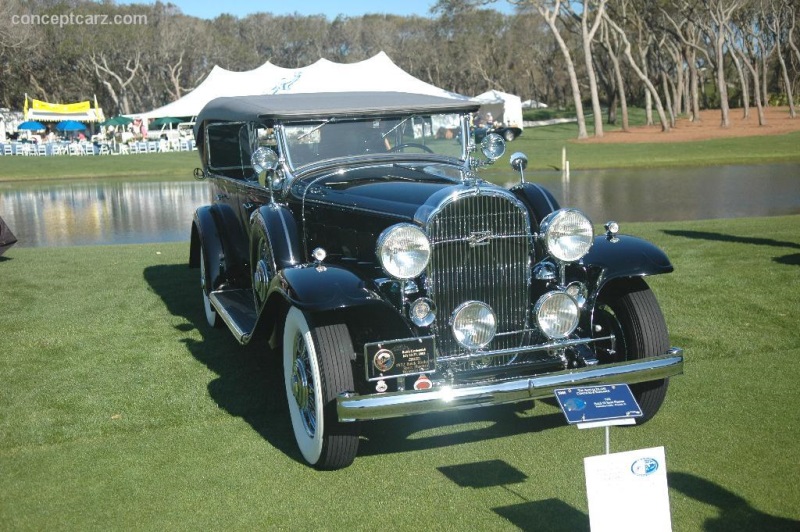1932 Buick Series 90 Navigation
The Buick Motor Company was named for automotive pioneer and founder David Dunbar Buick in 1899 in Jackson, Michigan (incorporated on May 19th, 1903 in Detroit, Michigan). It became one of the businesses William C. Durant brought together to form General Motors in 1908. They were not inexpensive and positioned above a Chevrolet, Oakland, and Oldsmobile. By 1932, Buick had built a reputation for building stylish and reliable cars. That year, a racing car with a Buick engine finished 11th at the Indianapolis 500, proving that Buick also had good performance. 
Convertible Coupe
Chassis #: 2631327
Engine #: 2782279
View info and history
Auction entries : 4The 1932 Buick Series 90
The 1932 Buick Series 90 Eight was the company's top-of-the-line model with a 134-inch wheelbase and prices that ranged from $1,675 to $1,955. (The Series 80 had a 126-inch wheelbase; the Series 60 on a 118 inch wheelbase; and the Series 50 on a 114-inch platform). The 1932 Buicks were given styling modifications that included new hood doors rather than louvers, longer flowing fenders, taillights, a tapered radiator, and a raked windshield with no external sun visor. The top-of-the-line Buick was the 90 series cars, which had a 134-inch wheelbase and offered in a variety of different body styles. Power was from a 344.8 cubic-inch overhead-valve inline eight-cylinder engine with 113 horsepower. Also available on the 90 series was Wizard Control, which provided owners both freewheeling and no-clutch shifting between second and third gears. The suspension was comprised of solid axles with leaf springs all around, and four-wheel mechanical drum brakes. The engine was backed by a three-speed sliding gear synchromesh transmission.Body Styles, Pricing, and Production
The generous 134-inch wheelbase of the Series 90 accommodated large and stately bodies, including seven-passenger sedans and limousines. The most popular body style was the two-door, five-passenger club sedan priced at $1,820 with 2,237 examples built. This was followed by 1,485 examples of the five-passenger sedan ($1,805), 1,460 of the two-door Victoria Coupe ($1,785), and 1,368 of the seven-passenger sedan ($1,955). A total of 586 examples were the two-door, four-seater country club coupe priced at $1,740, 289 of the convertible coupe ($1,800), 268 of the two-door, five-passenger convertible phaeton ($1,830), 164 of the limousine ($2,055), and 131 of the four-door, seven-passenger sport phaeton ($1,675). The total Buick Series 90 production for 1932 reached a total of 7,988 units.
Convertible Coupe
Chassis #: 2631327
Engine #: 2782279
View info and history
Auction entries : 4The Victoria Coupe was a five-passenger automobile with an elongated D-shaped rear side window and a large door accommodating both front and rear seat entry and exit. The rear bench seat could accommodate three of the five passengers.The sport coupe (a.k.a. a country club coupe) was very similar to the design bestowed upon the Series 60, but it had a longer rear deck. The five-passenger close-coupled club sedan was devoid of rear overhang and had a built-on trunk. 
Club Sedan
View info and historyThe convertible phaeton was a new addition to the Series 90 lineup for 1932 (a single-year option), with two doors and seating for five. It came standard with leather upholstery, a rear bench seat, two individual front seats, dual rear ashtrays, and a rear-mounted trunk. The two-doored coachwork from Fisher had a convertible top with removable center posts and roll-up windows.The convertible roadster had a two-passenger bench seat inside and a rumble-seat accommodating two additional passengers. The seven-passenger sedan had bench seating for two in the front, two jump seats in the center, and a three-passenger rear bench seat. There were three side windows with the third having rounded rear corners. Its body, which had the most rear body overhang, was shared with the limousine. A distinguishable feature of the limousine was the driver's partition window and nicer interior accouterments and materials. The Sport Phaeton had the same seating configuration as the limousine and 7-passenger sedan. 
Club Sedan
View info and historyThe five-passenger four-door sport phaeton had a luggage rack and dual sidemount spares. The five-passenger four-door sedan had 'suicide'-style center-latching side doors with a large rectangular window in each one. 344.8 Cubic-Inch Eight-Cylinder Engine
The 344.8 CID eight-cylinder engine was used by both the Series 80 and the Series 90. It had overhead valves, a two-barrel Marvel updraft carburetor, mechanical valve lifters, five main bearings, a cast-iron block, and a compression ratio of 4.5:1. It produced 113 horsepower at 3,200 RPM and 250 lbs.-ft. of torque at 1,400 RPM. Standard and Optional Equipment
The Series 90 came standard with a vacuum windshield pump, painted wire wheels (or 12-spoke wood wheels with demountable rims), dual side mounts, Delco-Remy ignition system, Ride Control, Zerk chassis lubrication, mechanical brakes on four wheels, Synchromesh transmission, and an automatic clutch. The Ride Regulator suspension system was only available in 1932 and allows selection from seven different settings to adjust shock absorber stiffness. A red button to the left of the pedals allows for clutch-less shifting through the vacuum-operated Wizard Control system, while controls for the Ride Regulator can be seen on the steering column.
Club Sedan
View info and historyOptional equipment included a chrome grille guard, single bar bumper, touring trunk, touring trunk rack, a clock, and a heater. The Buick Series 90
The Buick Series 90, combining the company's largest wheelbase and most potent engine, was produced from 1931 through 1942. From 1936 to 1942, it was known as the Series 90 Limited.The Series 90 shared its GM 'C-body' platform with the Cadillac Series 355. It was a premium luxury car that offered tremendous value, luxury, and elegance. In 1936, the model name was changed to '90 Limited' and shared its chassis with the Cadillac Series 70 vehicles. Its wheelbase grew by 2 inches in 1938, stretching from 138 to 140 inches. The previous wooden structural members of its frame were replaced with steel, increasing the vehicle's structural rigidity.
Club Sedan
View info and historyThe Limiteds were built at the Buick factory in Flint, Michigan; the Cadillacs were built in Detroit at the Clark Street Facility with coachwork provided by Fisher Body. During its production lifespan, the Limited was the best appointed car, riding on the company's longest wheelbase, and the most expensive within the Buick lineup.The 'Limited' name was revived in 1958 in celebration of GM's Fiftieth Anniversary.
by Daniel Vaughan | Mar 2020
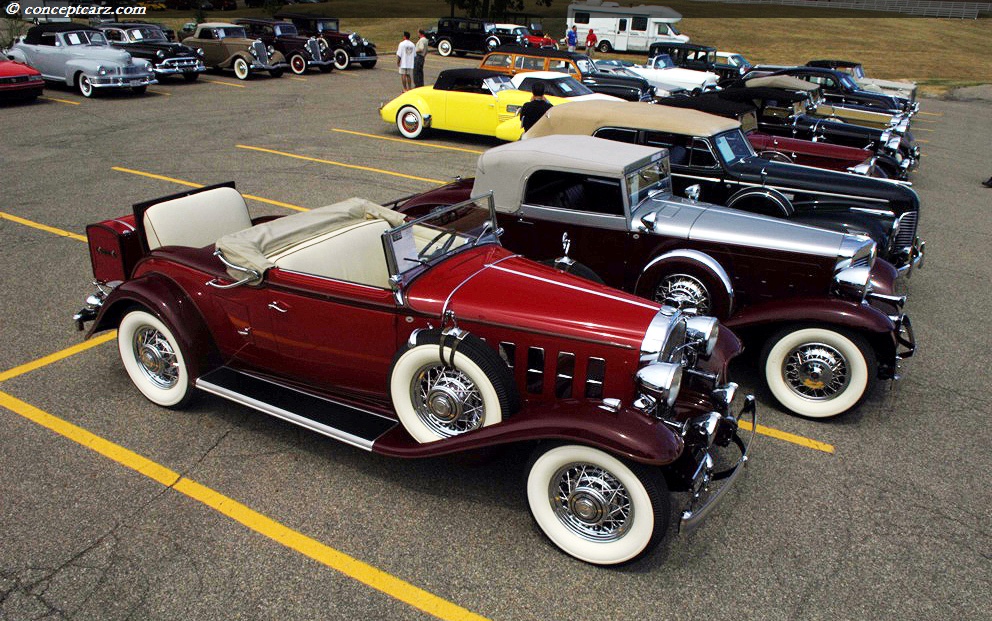
Convertible Coupe
Chassis #: 2631327
Engine #: 2782279
View info and history
Auction entries : 4
The 1932 Buick Series 90 Eight was the company's top-of-the-line model with a 134-inch wheelbase and prices that ranged from $1,675 to $1,955. (The Series 80 had a 126-inch wheelbase; the Series 60 on a 118 inch wheelbase; and the Series 50 on a 114-inch platform). The 1932 Buicks were given styling modifications that included new hood doors rather than louvers, longer flowing fenders, taillights, a tapered radiator, and a raked windshield with no external sun visor. The top-of-the-line Buick was the 90 series cars, which had a 134-inch wheelbase and offered in a variety of different body styles. Power was from a 344.8 cubic-inch overhead-valve inline eight-cylinder engine with 113 horsepower. Also available on the 90 series was Wizard Control, which provided owners both freewheeling and no-clutch shifting between second and third gears. The suspension was comprised of solid axles with leaf springs all around, and four-wheel mechanical drum brakes. The engine was backed by a three-speed sliding gear synchromesh transmission.Body Styles, Pricing, and Production
The generous 134-inch wheelbase of the Series 90 accommodated large and stately bodies, including seven-passenger sedans and limousines. The most popular body style was the two-door, five-passenger club sedan priced at $1,820 with 2,237 examples built. This was followed by 1,485 examples of the five-passenger sedan ($1,805), 1,460 of the two-door Victoria Coupe ($1,785), and 1,368 of the seven-passenger sedan ($1,955). A total of 586 examples were the two-door, four-seater country club coupe priced at $1,740, 289 of the convertible coupe ($1,800), 268 of the two-door, five-passenger convertible phaeton ($1,830), 164 of the limousine ($2,055), and 131 of the four-door, seven-passenger sport phaeton ($1,675). The total Buick Series 90 production for 1932 reached a total of 7,988 units.
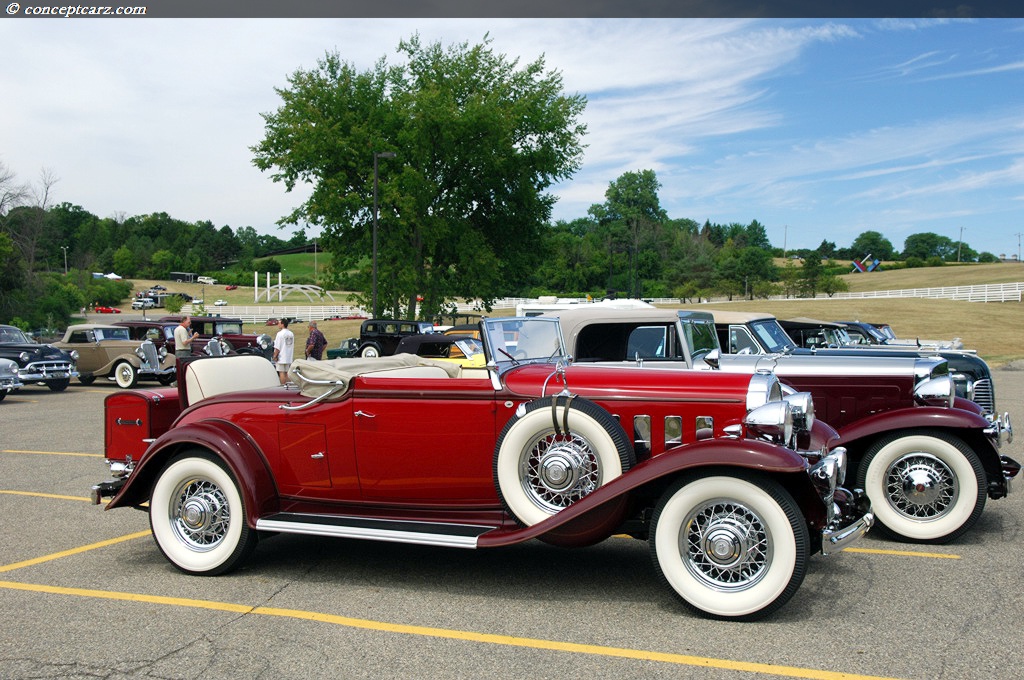
Convertible Coupe
Chassis #: 2631327
Engine #: 2782279
View info and history
Auction entries : 4
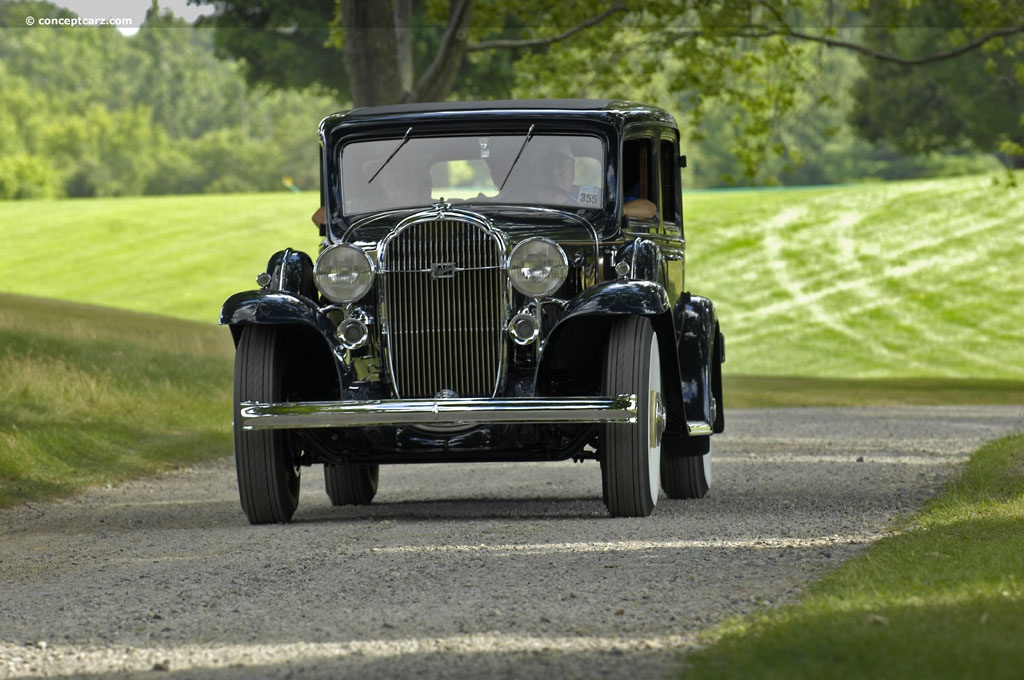
Club Sedan
View info and history
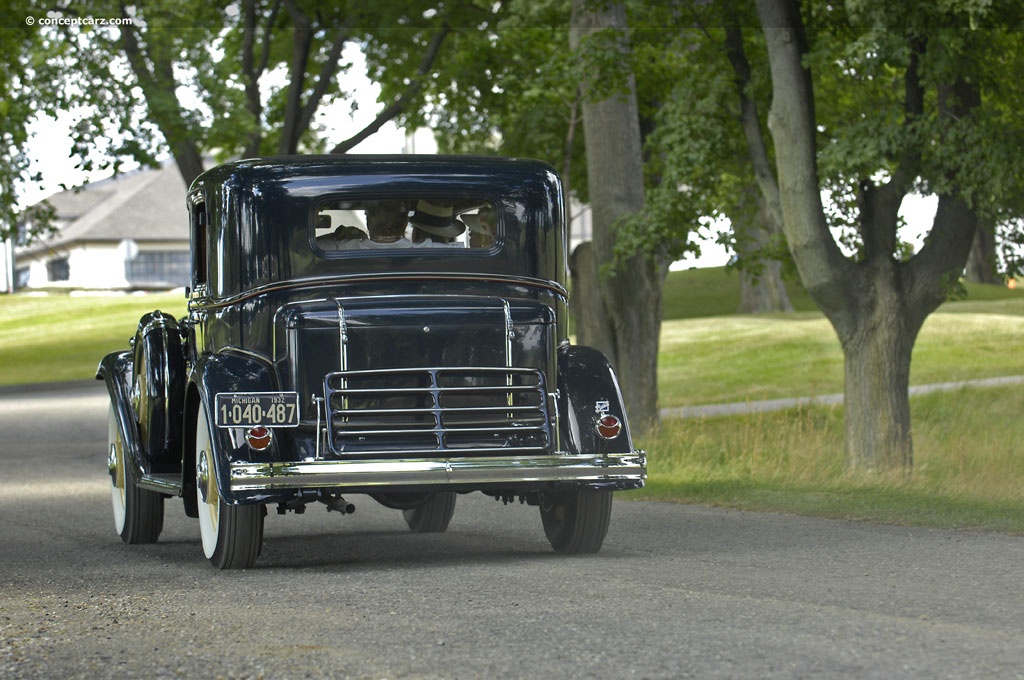
Club Sedan
View info and history
The 344.8 CID eight-cylinder engine was used by both the Series 80 and the Series 90. It had overhead valves, a two-barrel Marvel updraft carburetor, mechanical valve lifters, five main bearings, a cast-iron block, and a compression ratio of 4.5:1. It produced 113 horsepower at 3,200 RPM and 250 lbs.-ft. of torque at 1,400 RPM. Standard and Optional Equipment
The Series 90 came standard with a vacuum windshield pump, painted wire wheels (or 12-spoke wood wheels with demountable rims), dual side mounts, Delco-Remy ignition system, Ride Control, Zerk chassis lubrication, mechanical brakes on four wheels, Synchromesh transmission, and an automatic clutch. The Ride Regulator suspension system was only available in 1932 and allows selection from seven different settings to adjust shock absorber stiffness. A red button to the left of the pedals allows for clutch-less shifting through the vacuum-operated Wizard Control system, while controls for the Ride Regulator can be seen on the steering column.
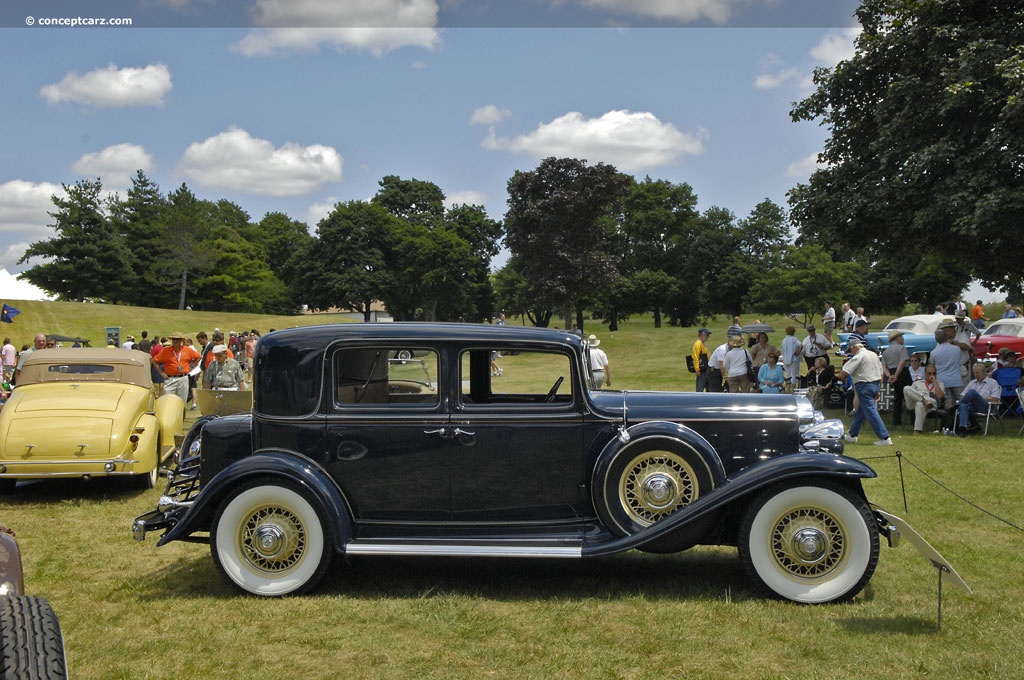
Club Sedan
View info and history
The Buick Series 90, combining the company's largest wheelbase and most potent engine, was produced from 1931 through 1942. From 1936 to 1942, it was known as the Series 90 Limited.The Series 90 shared its GM 'C-body' platform with the Cadillac Series 355. It was a premium luxury car that offered tremendous value, luxury, and elegance. In 1936, the model name was changed to '90 Limited' and shared its chassis with the Cadillac Series 70 vehicles. Its wheelbase grew by 2 inches in 1938, stretching from 138 to 140 inches. The previous wooden structural members of its frame were replaced with steel, increasing the vehicle's structural rigidity.
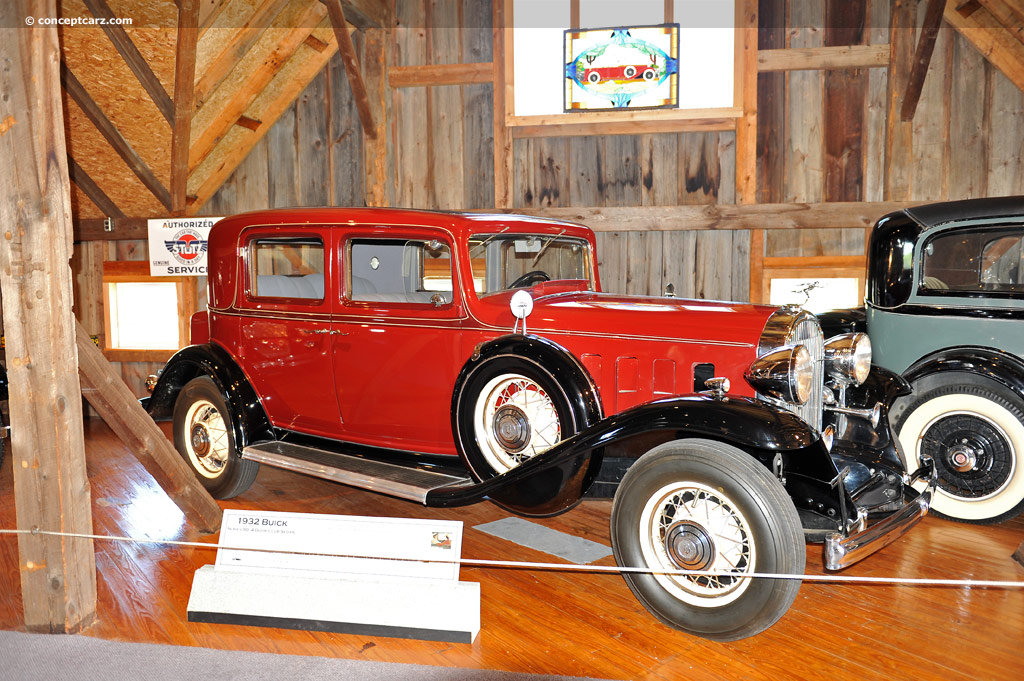
Club Sedan
View info and history
by Daniel Vaughan | Mar 2020
Related Reading : Buick Series 90 History
Considered to be the only Buicks that gained recognition by the Classic Car Club of America of Full Classics, the series 90 that were produced during 1931 to 1942 are also the most luxurious cars ever produced by Buick. Only 3,006 of the total 369,831 automobiles produced in 1941 by Buick, were Series 90, and only 605 were limousines. At the gargantuan weight of nearly 4760 pounds, 90 Series....
Continue Reading >>
Continue Reading >>
- 1932 Buick Series 90 Menu
- Article
- Image gallery
- Valuation
- Specifications
- Profiles
- Production figures
- Accessories
Buick
Similarly Sized Vehicles
from 1932
Similarly Priced Vehicles
1932 Buick Series 90 Vehicle Profiles
Recent Vehicle Additions
Performance and Specification Comparison
Price Comparison
$935 - $1,155
$1,250 - $1,390
Series 90 Specification Comparison by Year
Year
Production
Wheelbase
Engine
Prices
7,857
134.00 in., 140.00 in.
8 cyl., 344.80 CID., 113.00hp
8 cyl., 319.22 CID., 140.00hp
8 cyl., 319.22 CID., 140.00hp
$1,675 - $2,055
Related Automotive News

Sportiness In The Brand DNA: Game-Changer With Mercedes-Benz At Goodwood Festival Of Speed 2017
With a dozen racing cars and sporty vehicles from over 100 years, Mercedes-Benz Classic sums up the motto of this years Goodwood Festival of Speed Peaks of Performance – Motorsports Game-Changers celebrates competition vehicles that have written...

120 years of motor sport at Mercedes-Benz take centre stage at the Goodwood Festival of Speed 2014
Addicted to Winning at this years Goodwood Festival of Speed, Mercedes-Benz looks back on some fascinating racing victories of the last 120 years
The unique motor sport heritage of the Mercedes-Benz brand is being celebrated with an exclusive i...

Techno Classica 2014: more than 30 racing cars to celebrate 120 years of Mercedes-Benz motor racing history
Cars that were the heroes of magical moments put their stamp on this high-powered, most comprehensive show presentation
With more than 30 vehicles, Mercedes-Benz Classic presents motor racing history in all its unique breadth and depth
120 years o...

INFINITI SPONSORS MEDIA CENTER AT 2014 AMELIA ISLAND CONCOURS d'ELEGANCE
Infiniti Pavilion Display to Feature 2014 Product Line and Specially Designed 2014 Q60 Convertible Celebrating Bobby Unsers 1968 Indianapolis 500 Win
FRANKLIN, Tenn. – For the fourth consecutive year, Infiniti will support the Amelia I...

Magnificent Series of Coachbuilt Classics To Grace RM's Amelia Island Concours D'Elegance Sale
RM Auctions returns as the official auction house of the Amelia Island Concours dElegance, March 9, 2013
Single-day sale features breathtaking roster of more than 80 investment-quality collector cars
Notable highlights include an outstanding s...

























